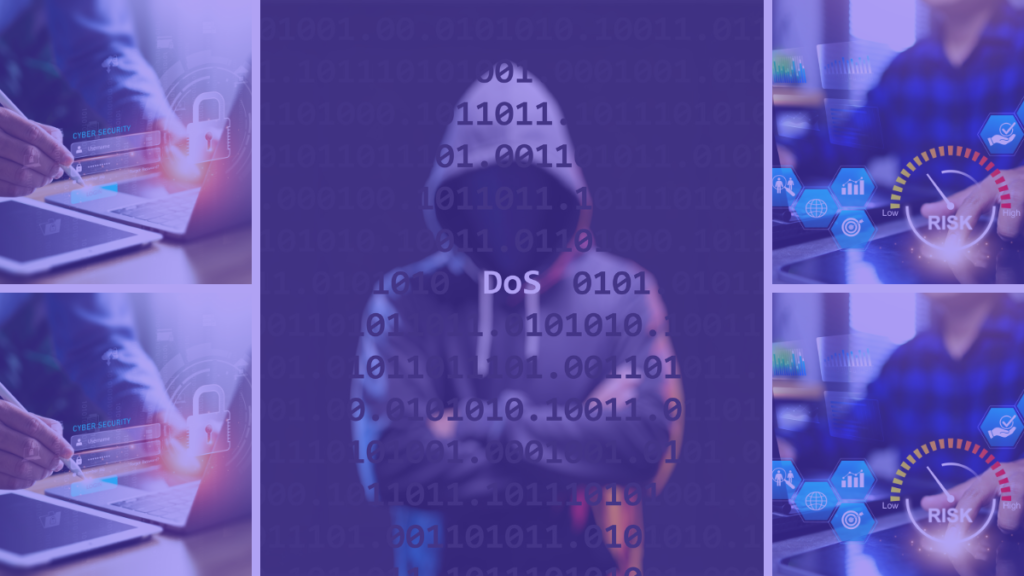In network security, the terms “risk,” “vulnerability,” and “threat” are often used interchangeably, but they each hold distinct meanings and implications. Understanding the nuances between these concepts is not just crucial but empowering for organisations to assess and mitigate their security challenges effectively.

Risk in network security refers to the potential for loss or damage to an organisation’s assets due to a threat exploiting a vulnerability. This can stem from various sources, including natural disasters, human errors, or malicious actors.
Conversely, vulnerability refers to weaknesses or flaws in a network’s defences that threats can exploit. These vulnerabilities can exist in software, hardware, or even human processes and provide an entry point for attackers to gain unauthorised access, disrupt operations, or steal sensitive information. Vulnerabilities can arise from outdated systems, misconfigured settings, or a lack of security controls, and they must be identified and addressed to mitigate the risk of a successful attack.
In the context of network security, threats are any potential danger or harmful action that can compromise the confidentiality, integrity, or availability of a network’s assets. Threats can come from various sources, including cybercriminals, nation-state actors, hacktivists, or even disgruntled insiders. These threats can take multiple forms, such as malware, phishing attacks, distributed denial-of-service (DDoS) attacks, or data breaches, and they can have devastating consequences for an organisation.
To illustrate the relationship between these terms, consider the following example: A network has a vulnerability, such as an outdated and unpatched software system. This vulnerability creates an opportunity for a threat, like a hacker, to exploit the weakness and gain unauthorised access to the network. If this access is successful, it may result in a risk, such as the compromise of sensitive data, disruption of services, or financial loss.
Types Of Risks In Network Security
One of the most common types of risks in network security is operational risk. This refers to potential loss or damage due to internal factors, such as system failures, human errors, or process breakdowns. For example, a power outage or a misconfigured firewall could disrupt network operations, leading to downtime and potential data loss.
Another significant risk category is financial risk, which encompasses the potential for financial losses due to security incidents. This can include the costs associated with incident response, regulatory fines, or reputational damage. Cybercriminals often target organisations for financial gain through ransomware attacks, data theft, or other malicious activities.
Compliance risk is another critical concern for organisations, particularly those operating in highly regulated industries. Failure to comply with industry standards, government regulations, or contractual obligations can result in legal consequences, such as penalties or lawsuits. Maintaining compliance with security frameworks and regulations is essential to mitigate this risk.
On the other hand, strategic risk refers to the potential for a security incident to undermine an organisation’s long-term goals and competitive position. A successful cyberattack, for example, could disrupt business operations, damage the organisation’s reputation, and erode customer trust, ultimately impacting its ability to achieve its strategic objectives in a significant and urgent manner.
Finally, reputational risk is the potential for a security incident to negatively impact an organisation’s public image and brand perception. A data breach or a high-profile security incident can erode customer confidence, make attracting and retaining talent more difficult, and ultimately affect the organisation’s bottom line.
Identifying Vulnerabilities In A Network
Vulnerabilities are weaknesses or flaws in a network’s defences that threats can exploit. They allow attackers to gain unauthorised access, disrupt operations, or steal sensitive data. Organisations can significantly reduce the risk of successful cyberattacks by proactively identifying and addressing these vulnerabilities.
One primary method for identifying vulnerabilities is vulnerability assessments. These assessments involve systematically scanning the network, its systems, and applications to detect known vulnerabilities. This can be done using specialised software tools or by engaging the services of a security professional or a third-party security firm. The assessment process typically includes identifying outdated software, misconfigurations, open ports, and other potential entry points that attackers could exploit.
In addition to vulnerability assessments, organisations can also conduct penetration testing, which involves simulating real-world attacks to identify vulnerabilities in the network. Penetration testing is often carried out by experienced security professionals who attempt to breach the network’s defences using a range of techniques, including social engineering, exploitation of software vulnerabilities, and brute-force attacks. The results of these tests can provide valuable insights into the network’s security posture and help prioritise remediation efforts.
Another important aspect of identifying vulnerabilities is maintaining a comprehensive inventory of all the assets within the network, including hardware, software, and network devices. This inventory can help security teams understand the scope of the network, identify potential points of failure, and ensure that all components are properly configured and patched. Regular updates and patches are crucial for addressing known vulnerabilities and mitigating the risk of successful attacks.
Furthermore, organisations should consider implementing continuous monitoring and threat detection capabilities to identify and respond to emerging vulnerabilities and threats in near real-time. This can involve using security information and event management (SIEM) tools, security orchestration and automated response (SOAR) platforms, or other security analytics solutions that can help detect and respond to suspicious activity within the network.
Common Network Security Threats
One of the most prevalent threats is malware – any software designed to cause harm or disrupt a network’s normal operation. Malware can take various forms, including viruses that replicate and spread, worms that can self-replicate and spread independently, Trojans that appear harmless but perform malicious actions, and ransomware that encrypts data and demands a ransom for its release. It can be used to steal sensitive data, disrupt operations, or gain unauthorised access to a network. Malware can be delivered through various channels, such as infected email attachments, compromised websites, or software vulnerabilities.
Another significant threat is phishing, which involves using deceptive tactics to trick individuals into revealing sensitive information or performing actions that compromise the network’s security. Phishing attacks can take the form of fraudulent emails, SMS messages, or social media posts that appear to be from legitimate sources, such as financial institutions or trusted organisations. These attacks can lead to the theft of login credentials, financial information, or other sensitive data.
Distributed Denial-of-Service (DDoS) attacks are another threat that can disrupt the availability of a network or its services. In a DDoS attack, an attacker floods a network or a specific system with a large traffic volume, overwhelming its resources and rendering it unavailable to legitimate users. DDoS attacks can disrupt business operations, extort money, or cover up other malicious activities.
Advanced Persistent Threats (APTs) are a particularly sophisticated type of threat that involves a targeted and sustained effort to gain unauthorised access to a network or system. APTs often employ a combination of social engineering, malware, and other techniques to infiltrate an organisation’s defences and maintain a persistent presence within the network. These threats are typically associated with state-sponsored actors or highly skilled cybercriminal groups and can be challenging to detect and mitigate.
Insider threats are another significant concern for organisations as disgruntled employees, contractors, or other insiders with legitimate access to the network can intentionally or unintentionally compromise the network’s security, either by misusing their access privileges or by falling victim to social engineering tactics.
The Anatomy Of A Network Security Breach
A network security breach typically follows a predictable pattern. Attackers leverage a combination of tactics to gain unauthorised access, escalate their privileges, and achieve their malicious objectives.
- The first stage of a network security breach is often reconnaissance, where the attacker gathers information about the target organisation, network infrastructure, and potential vulnerabilities. This can involve scanning the network, researching the organisation’s public information, or using social engineering tactics to gather employee intelligence.
- Once the attacker has gathered sufficient information, they will typically attempt to exploit a vulnerability in the network’s defences. This can be a known software vulnerability, a misconfigured system, or even a weakness in the organisation’s security policies or procedures. By exploiting these vulnerabilities, the attacker can gain an initial foothold within the network, often through malware or other malicious tools.
- With a foothold established, the attacker will then attempt to escalate their privileges and move laterally within the network. This can involve credential theft, privilege escalation, or the exploitation of additional vulnerabilities. The attacker aims to gain access to sensitive data, critical systems, or other high-value assets that can be used for malicious purposes.
- Once the attacker has achieved their objectives, they may attempt to cover their tracks and maintain persistent access to the network by installing backdoors, modifying logs, or creating additional access points that can be used for future attacks. Depending on the motivation, the attacker may also attempt to exfiltrate sensitive data or disrupt the organisation’s operations.
- Attackers may employ various techniques throughout this process, including social engineering, phishing, malware, and other advanced tactics. They may also leverage the organisation’s own resources, such as legitimate user credentials or network services, to blend in and evade detection.
By anticipating the attacker’s tactics and techniques, security teams can proactively identify and address vulnerabilities, implement robust detection and monitoring capabilities, and ensure a rapid and effective response to any security incidents that may occur.
Contact us today to fortify your network security.







